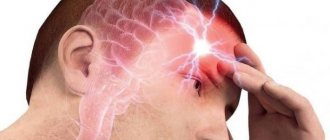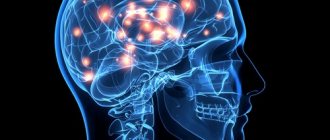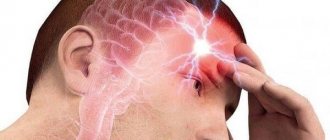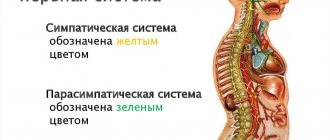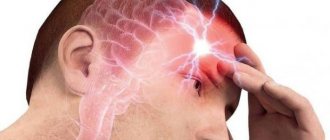The nervous system has a structure consisting of somatic and autonomic components. The first is responsible for motor reactions that arise under the influence of external factors. The vegetative part is involved in the work of internal organs, blood vessels and glands, which is described in scientific articles about VSD and the websites of clinics licensed to treat it.
The autonomic system is usually divided into sympathetic and parasympathetic fragments. The first part is responsible for increasing activity and stimulating metabolism. This leads to increased tissue excitability. The parasympathetic system restores the body and regulates its functions during sleep.
They are distinguished by synchronous recovery. However, under the influence of external conditions, a dominant is formed, and a predominance of a certain department is observed. Mental adaptation is disrupted, the emotional state suffers.
Vegetovascular dystonia (VSD) is a combination of manifestations that appear when there are interruptions in the functioning of the autonomic part of the nervous system. The disease causes various abnormalities in the functioning of internal organs.
This syndrome has different names - neurocirculatory dystonia, autonomic dysregulation, autonomic neurosis, neurasthenia.
Panic attacks with VSD
VSD and panic attacks are considered completely different conditions. Many patients confuse these diseases because they differ in other similar symptoms. During an attack of dystonia and at the time of a panic attack, a release of adrenaline, norepinephrine, and acetylcholine occurs (observed in the sympathetic form). Therefore, many experts diagnose people with a tendency to panic attacks as VSD.
This conclusion is considered erroneous. To eliminate vegetative-vascular dystonia, it is necessary to take medications, and the treatment of panic attacks is carried out using psychotherapy methods.
It is easy to confuse VSD and a panic attack. Experts in the post-Soviet space practically do not diagnose panic attacks. They are treating the disease. To eliminate the symptoms of panic attacks, you do not need to take medications.
To stabilize blood pressure parameters, to combat headaches and pathologies in the heart area, the help of a psychotherapist is needed. This deviation is a neurosis. Vegetative vascular dystonia is considered a deviation of the autonomic nervous system. This condition requires the use of medications.
Prevention of autonomic dystonia syndrome
Strengthening health and restorative measures is the most important stage in the prevention of SVD. It is important not only to monitor the child and his lifestyle, but also to maintain a good microclimate in the family (reduce stress, prevent conflicts, and so on). Proper nutrition should be combined with adequate physical activity that is feasible for the child’s body. For preventive purposes, walks in the forest, drinking mineral waters, swimming in the sea, and clean mountain air are useful.
Causes of pathology
Various circumstances lead to dystonia. According to scientific articles, websites and materials, the following categories are defined:
- Psychological causes - severe or chronic stress, depression.
- Physical causes - severe fatigue, elevated temperatures or vibrations, sunstroke.
- Chemical factors - alcoholism, smoking, drug use. The disorder is diagnosed when certain drugs are used. A common cause of problems are medications containing caffeine and ephedrine, and bronchodilators.
- Imbalance of hormones - manifests itself in adolescence, during pregnancy and lactation, during menopause, in the case of using hormonal contraceptives.
- Infections – dysfunction of the kidneys, respiratory system or brain.
- Neurological problems - traumatic brain injury and Parkinson's disease.
- Endocrine pathologies – thyrotoxicosis, diabetes mellitus.
- Diseases of the heart and blood vessels – coronary heart disease, hypertension.
Not all people with such problems suffer from autonomic dystonia. Women often complain of this disorder; men suffer from it less often. Half of the types of the disease occur in young girls under 25 years of age.
An indicator of other risks of developing VSD in patients is heredity. Autonomic abnormalities are often observed in children or adolescents. As the child develops, the pathology is compensated. Then the manifestations of the disease disappear, but under the influence of negative conditions, dystonia approaches again.
The impetus for the development of this disease is:
- Psychological personality type – suspiciousness and hypochondria.
- Unfavorable environmental and socio-economic criteria - lack of sun, physical inactivity, lack of finances, consumption of low-quality food.
- Intrauterine disorders – rhesus conflict, hypoxia, infectious pathologies.
What is the manifestation of vegetative dystonia syndrome?
Autonomic dystonia syndrome is divided into three main types:
Vegetative-vascular-trophic syndrome is based on autonomic disorders caused by lesions of mixed nerves, roots and plexuses responsible for supplying impulses to the extremities.
The syndrome of progressive autonomic failure is expressed by peripheral and cerebral disorders in combination with peripheral segmental disorders.
Psychovegetative syndrome is manifested by paroxysmal disorders caused by dysfunction of various brain systems.
Symptoms
Vegetative-vascular dystonia in adult sick people has different manifestations. Most often, VSD has a hidden course. Under the influence of increased stress or other negative circumstances, attacks occur. They occur suddenly and significantly impair the quality of life. Sympathetic dystonia is worse experienced by older people because they have chronic diseases.
There are manifestations of other diseases that are not directly related to the autonomic nervous system. If there are indicators of damage in the area of the heart and blood vessels, the neurologist diagnoses the presence of VSD.
In accordance with scientific articles, the signs of the diagnosis of VSD are:
- headaches - they always differ in severity and duration;
- dizziness;
- severe sweating (increased sweat secretion from the sebaceous glands);
- weakness and high fatigue;
- increased heart rate;
- noise in ears;
- fluctuations in body temperature;
- increased drowsiness, apathy;
- sudden mood changes;
- severe anxiety;
- panic attacks;
- darkening of the eyes, lightheadedness;
- hypochondria.
Panic attacks
Vascular parasympathetic pathology in patients is accompanied by panic attacks. This term refers to a strong fear of death that grips a person. The patient develops anxiety, turning into real horror.
The body sends impulses about danger, but does not find a way out of the situation. Such an attack lasts on average a quarter of an hour, the state of health is slowly restored.
Inability to fall asleep
Sleep problems are typical for all patients with VSD syndrome. Dysfunction in the nervous system manifests itself in the form of insomnia or increased sleepiness. Such symptoms are caused by various disorders in the function of the autonomic nervous system. This provokes a change in biorhythms.
With this disease, it is difficult for the patient to relax. His sleep is short-term. This causes increased sleepiness during the day. When the nervous system is damaged, memory is impaired, concentration deteriorates, and performance decreases. A long absence of normal sleep leads to the appearance of psycho-emotional abnormalities. The nervous system cannot cope with the stress, breakdowns appear.
Emotional instability
It is a consequence of insomnia. A person feels tired, resulting in sudden mood swings. After rest, the patient is quite cheerful, but after a certain time he begins to feel sad or even aggressive.
Change in skin tone
Caused by damage to vascular tone. The patient experiences a rapid flow of blood to the skin and an equally rapid outflow. The skin turns red and appears pale. Similar problems occur during emotional arousal and after increased physical exertion.
Respiratory disorders
Dyspnea with parasympathetic VSD is caused by changes in the innervation of the bronchi. Under the influence of respiratory infections, stress, increased fatigue, and physical exertion, symptoms of shortness of breath appear. Middle-aged or elderly patients experience suffocation, chest discomfort, and the main complication is bronchial asthma. This symptom is associated with cardiac pathologies, which makes diagnosis difficult.
Weather dependent
The autonomic system helps the patient’s body adapt to any weather conditions. If its work is disrupted, a dependence on the climate occurs. High or low atmospheric pressure, hot weather, wind, and precipitation provoke signs of VSD diagnosis such as weakness, headaches, loss of appetite and decreased ability to work.
Digestive disorders
The autonomic system regulates the function of the digestive organs. If this area does not work properly, excessive appetite or its complete absence is observed. During the period of vegetative-vascular dystonia, manifestations of gastritis or gastric ulcer occur. The symptoms of the disease vary from person to person. Constipation or diarrhea, intestinal spasms, pain, and inflammation of the mucous membranes are observed.
Disorders of the genitourinary system
Autonomic dystonia syndrome is accompanied by increased urination and pain in the area of genital function, but they are not associated with pathologies. This is due to insufficient innervation of the pelvic organs. In women, the course of dystonia occurs with cycle deviations and decreased libido. Men may have problems with potency and the appearance of signals of prostate damage.
Dizziness
The cause of this symptom of the disease is a violation of cerebral vascular tone. Their condition is affected by:
- mental overload;
- stress;
- heredity;
- diabetes;
- nervous system disorders;
- lesions of the thyroid gland.
Headache
Autonomic dystonia syndrome causes other symptoms in the patient. An important indicator of VSD is headache. It manifests itself in people who are susceptible to fear and experience strong emotions after stress.
The headache during the illness is not intense, it increases when the head is tilted. Other signs of VSD are possible - fainting, dizziness, nausea, tinnitus, unsteadiness of gait.
Vegetative-vascular dystonia: symptoms and treatment in adults
The term VSD is used in their practice only by doctors from CIS countries; in the West, such a disease does not exist. In this regard, some confusion arises. Some experts do not recognize the existence of vegetative-vascular dystonia in adults, while others, on the contrary, consider it a conditional nosological form. The complex of symptoms and causes of dystonia are extensive, so the examination must be comprehensive and qualified. Still, in most cases, the syndrome is not associated with any serious disease, but is a sign. To find out whether it is possible to get rid of vegetative-vascular dystonia forever, you need to know its symptoms and current treatment regimens, including folk remedies. It is these aspects of VSD in adults that we will consider in the article. Classification To date, a unified classification of VSD has not been developed. According to various authors, autonomic dysfunction differs according to a number of the following criteria: 1. Mixed type. It occurs when there is a conflict between parasympathetic and sympathetic. This looks like a struggle for leadership in the nervous system and this is also not normal. 2. Hypotonic type. If the parasympathetic nervous system significantly predominates throughout the day, the body is filled with energy, but cannot use its strength, depression, hypotension, etc. occurs. 3. Hypertensive type. If the sympathetic nervous system predominates throughout the day, a person feels palpitations, a feeling of fear, the body quickly gets tired, sleeps poorly, the parasympathetic system cannot cope, and strength is not restored. Based on the nature of the attacks that complicate the symptoms of vegetative-vascular dystonia, sympathoadrenal, vagoinsular and mixed crises are distinguished. Mild crises are characterized by monosymptomatic manifestations, occur with pronounced vegetative changes, and last 10-15 minutes. Crises of moderate severity have polysymptomatic manifestations, pronounced vegetative changes and last from 15 to 20 minutes. Severe crises are manifested by polysymptoms, severe vegetative disorders, hyperkinesis, convulsions, attacks lasting more than one hour and post-crisis asthenia for several days. Causes Why does VSD occur, and what is it? Vegetative-vascular dystonia is a disorder of the autonomic nervous system. The ANS is responsible for maintaining internal balance in the human body, influencing all organs and organ systems. Disturbances in the functioning of the ANS most often manifest themselves in the form of dysfunctions of blood circulation, digestion, and heat exchange. In adults, the prevalence of the syndrome is high in the age group of 20-30 years, while in women manifestations of dystonia are more common than in men. In old age, the likelihood of developing VSD decreases sharply. Among the external factors that contribute to the appearance of signs of VSD are: • severe stress, depression; • severe viral infection; • exposure to electric current; • radioactive exposure; • excessive insolation; • unfavorable environment; • alcoholism, drug addiction; • insomnia, mental fatigue; • heavy physical activity; • traumatic brain injury; • protracted bacterial disease (eg, sore throat, bronchitis). The risk group affects a fairly large number of the population: 1. Women. Oddly enough, women, by nature, are more emotional, vulnerable and receptive. Accordingly, the mental state is more easily disturbed. 2. Teenagers, pregnant women, women during menopause (sharp hormonal disruptions). 3. People whose work is closely related to travel (constant acclimatization) and a sedentary lifestyle. 4. Men and women diagnosed with cervical osteochondrosis. 5. Living in constant psycho-emotional discomfort. 6. VSD can occur in people who have suffered birth injuries, oxygen starvation, even at birth. 7. Suspicious and stressed people are also at risk. 8. People in whom the majority of family members are diagnosed with VSD (hereditary predisposition). 9. Suffering from chronic diseases. The disease manifests itself with certain symptoms, which occur in attacks or are permanent. Moreover, the presence of constant symptoms indicates congenital instability of the nervous system. General signs of VSD in adults Vegetative-vascular dystonia in adults has very different symptoms depending on the weak point in the body that reacts to the stimulus. However, most often, experts note the following signs: • hot flashes; • vascular spasms; • shallow sleep; • tremor of the hands and even legs; • fainting conditions; • strong heartbeat; • apathy and lack of strength; • severe lack of air; • frequent headaches and even migraines; • cardiac arrhythmia in all its manifestations; • internal trembling and various manifestations of fears; • joint pain, regardless of arthritis and arthrosis; • cold hands at any time, even at above-zero temperatures and heat; • neurotic deviations from overexcitability to active passivity. These are the most characteristic signs of VSD, which adults often ignore, attributing them to individual physiological characteristics. Symptoms of vegetative-vascular dystonia In the case of vegetative-vascular dystonia, the symptoms are very diverse, which is due to the multifaceted influence on the body of the VNS, which regulates the basic vegetative functions - breathing, blood supply, sweating, urination, digestion, etc. In this regard, several groups of vegetative symptoms are distinguished -vascular dystonia in adults due to predominant disturbances in the activity of various body systems. These disorders can manifest themselves in isolation or in combination with each other: 1. In the cardiovascular system: disturbances in heart rate (increasing or stopping), fluctuations in blood pressure, pain in the left half of the chest; 2. In the respiratory system: feeling of lack of air, suffocation, shortness of breath, difficulty breathing, rapid breathing; 3. In the digestive system: nausea and gag reflex, flatulence, belching, heartburn, constipation and diarrhea; 4. In the thermo-regulatory system: chills, coldness in the extremities, increased sweating, increased temperature due to stress; 5. In the vestibular system: dizziness, lightheadedness; 6. In the genitourinary system: frequent urination, pain and itching in the genital area; 7. In the emotional sphere: anxiety, restlessness, phobias, increased fatigue, decreased performance, constant emotional stress, low mood, tearfulness, appetite and sleep disorders. The course of vegetative-vascular dystonia can be hidden, can be permanent, or can manifest itself in paroxysms (vegetative crises). Most often, crises occur against the background of mental and physical stress, with increased emotional stress, as well as with various infectious diseases. Their duration can vary from several minutes to several hours. Attacks of exacerbation of VSD An attack of vegetative-vascular dystonia begins sharply, suddenly. A person suddenly experiences palpitations, increased blood pressure, pale skin, increased body temperature, and developed chills. During an attack, a person has a pronounced strong fear. After a crisis, a large amount of light-colored urine is released and severe weakness develops, including trembling in the legs and the inability to move normally. In the period after the crisis, a sharp decrease in blood pressure is possible. In addition, exacerbation of VSD can occur in the form of a vagoinsular crisis. It is characterized by the appearance of sudden fainting, which is preceded by short-term pre-fainting phenomena (for example, darkening in the eyes, noise in the head, severe weakness, a feeling of the unreality of what is happening). Also, during an attack, a person may experience sharp and severe pain in the abdomen, an imperative desire to empty the intestines, increased motility of the digestive tract, decreased blood pressure, bradycardia, increased sweating, as well as a feeling of heat, nausea, melancholy and severe fear. Diagnosis of VSD To understand how to treat vegetative vascular dystonia, it is necessary not only to diagnose the disease, but also to determine the cause of its development. Therefore, in order to correctly diagnose VSD, professionalism is required, as well as the coordination of the work of such specialists as a cardiologist, neurologist, and therapist. It is necessary to weed out other diagnoses that have similar symptoms. To do this, you will have to undergo certain examinations: • computer electroencephalography, • electrocardiography, • magnetic nuclear resonance, • vegetative tests. Of course, the diagnosis will be prescribed based on the results of a conversation with the patient, after familiarizing himself with his complaints. Treatment of vegetative-vascular dystonia When vegetative-vascular dystonia is detected, treatment is carried out depending on the type of syndrome, and the therapeutic strategy should also take into account other existing somatic diseases. The treatment complex includes medicinal methods of controlling VSD and non-medicinal methods, which can sometimes be very effective and even replace basic drug therapy. Therefore, treatment with this syndrome should begin not with the use of medications, but with changes in diet and lifestyle. It is necessary to observe: • an adequate work and rest schedule; • balanced and healthy diet; • adequate level of physical activity; • rejection of bad habits; • elimination of occupational hazards; • avoiding stressful situations or developing stress resistance; • normalization of body mass index. The following methods also have an excellent effect on curing VSD: • water procedures; • reflexology; •massotherapy. Also, the physiotherapeutic effect will depend on the type of dysfunction of the autonomic system. • for vagotonia, electropharesis with calcium, caffeine and mesatone is prescribed. • for sympathicotonia - with papaverine and bromine, magnesium and aminophylline. If these measures, which are aimed at a general strengthening effect, do not help much, then pharmaceutical drugs are prescribed. They are selected individually for each patient, starting with minimal doses and gradually increasing to the desired concentration. Particular attention is paid to getting rid of chronic foci of infection in the body, treating endocrine and other pathologies. Drug treatment of VSD in adults Treatment of vegetative-vascular dystonia is carried out mainly according to symptoms. It is impossible to say exactly what drugs will be prescribed for treatment; it depends on the characteristics of the case, they are selected only after examining the patient. First of all, antidepressants and tranquilizers are prescribed. The dosage is selected based on the severity of symptoms. In addition to them, antihypertensive drugs are prescribed or, on the contrary, caffeine to raise blood pressure. B vitamins, ginseng and beta blockers are considered mandatory. A special group in the treatment of VSD consists of nootropic drugs (such as Nootropil, Piracetam), which have the ability to improve energy processes and blood supply to the brain, increasing the brain’s resistance to oxygen starvation. These drugs activate intellectual functions and improve brain memory. However, you cannot take them on your own. Let's consider some drugs used in the treatment of vegetative-vascular dystonia: 1. Persen. Has a calming and relaxing effect. 2. Novo-passit. The herbal drug has a pronounced sedative effect and helps in the fight against fears and anxiety. 3. Corvalol. Calms the body and helps normalize sleep. Also has a slight relaxing effect. 4. Valocormid. It has an antispasmodic, relaxing and cardiotonic (reducing the load on the heart) effect. Corrects the excitability of the nervous system. 5. Normatens. A drug that fights hypertension. The medicine also causes vasodilation and minimizes overall peripheral vascular resistance. Makes physiological sleep deeper. 6. Azafen. Eliminates anxiety, improves mood, eliminates sadness. 7. Vinpocetine. A medicine that improves cerebral circulation. Produces a vasodilating effect. Thus, the range of drugs used to treat VSD is quite wide. This is due to the fact that, along with treatment of the underlying disease, it is necessary to carry out effective symptomatic therapy aimed at relieving the painful manifestations of VSD. Folk treatment of vegetative vascular dystonia The use of folk methods is classified depending on the type of VSD: 1. For vegetative disorders of the hypotonic type, herbs such as ginseng, aralia, sandy immortelle, eutherococcus, eleutherococcus, Leuzea safflower, juniper, bearberry, Schisandra chinensis, lingonberry are used . They are designed to improve well-being and increase blood pressure. 2. For disorders of the hypertensive or mixed type, herbal preparations and plants that have a calming effect are widely used: mint, valerian, sage, motherwort, peony root, lemon balm, hops. These herbs, on the contrary, soothe and lower blood pressure. Vegetative vascular dystonia is primarily a disorder of the nervous system. Therefore, in most cases, treatment of VSD with folk remedies is based on taking soothing decoctions of medicinal plants with the function of normalizing blood pressure and the activity of the heart muscle. 1. Take equal quantities of calendula flowers, valerian root and rhizome, caraway fruits, motherwort, dill seeds and mix thoroughly. 1 teaspoon of the mixture per 200 ml of boiling water, let stand for two hours, filter. Use for vegetative-vascular dystonia 4-5 times, 1 tbsp. spoon a day. 2. We use 0.5 shares of juniper fruits, 0.5 shares of calamus rhizomes, 2 shares of rose hips, 2 shares of yarrow herb, 1 share of strawberry leaves, 1 share of speedwell grass, 1 share of St. John's wort herb, 1 share of chicory flowers, mix. Let's take 2 tbsp. l. collection, add 500 ml of boiling water, leave in a thermos overnight. We filter and take the infusion in 3 doses on an empty stomach. 3. Motherwort tincture. Take 40–50 drops 3–4 times a day. In terms of effectiveness, this drug surpasses even valerian tincture. It relieves pain in the heart, relieves nervous shock and palpitations. 4. You need to mix 200 ml of natural Cahors, honey and freshly squeezed juices of carrots, garlic, lemon, radish and beets. Take this medicine 15 ml (tablespoon) half an hour before breakfast, lunch and dinner. 5. Crushed valerian rhizome – 15 g, yarrow – 50 g, lemon balm – 10 g, pour 1 liter of hot water, put on low heat and boil for 20 minutes, filter. Drink a decoction for vegetative-vascular dystonia, 150 ml 3 times a day before meals. 6. 200 g of dried apricots, 25 g of walnuts, seedless raisins, figs - preferably dried, chop everything. Use 1 tbsp once a day. spoon with kefir. The course of treatment is one month, take a break for 1 week and repeat. The mixture is useful for vegetative-vascular dystonia and also has taste qualities. 7. Pour one glass of dill seed and 10 g of crushed dry valerian root into 1 liter of boiling water in a thermos, let it sit for two days, filter, then add 50 g of honey, strain. Drink 2 tbsp. spoons before meals. Healing herbs do not cause dependence or addiction; they can be taken for a long time. They have a mild healing effect on the body; in addition, it is possible to quickly determine whether they are suitable for treatment in each particular case. However, before you start taking folk remedies, you should check with your doctor for any contraindications. Physiotherapy Methods of physiotherapeutic treatment of this autonomic disorder include: • electrosleep; • electrophoresis; • inductothermy; • darsonvalization; • galvanization; • laser therapy; • magnetic therapy; • aeroionotherapy. Physiotherapy in the treatment of vegetative-vascular dystonia is aimed at regulating vascular tone, normalizing metabolism and eliminating pain. The nature, systematicity and intensity of the procedures are selected by the doctor in accordance with the characteristics of the disease. Massage Massage for vegetative neurosis should be carried out in accordance with the type of disease. For the hypertensive type, massage of the collar area, legs, and abdomen is recommended. Impact techniques along with beating should be excluded. For hypotensive vegetative-vascular dystonia, acupressure and general massage are performed using elements such as stroking, rubbing, kneading, and vibration. Massage helps to normalize the functionality of the nervous system, eliminate headaches, and improve the patient’s sleep. Physical exercise Daily walks in the fresh air and moderate exercise bring relief. It is especially good to visit the pool regularly; swimming is recommended by all doctors. Skiing in the winter forest, hiking - anything that gives sufficient stress to the muscles and brings joy. The latter is especially important. Classes must be pleasure. You can engage in the development of the dance of the abdomen or Latin dance. Movement to music, live communication is a beautiful medicine for depression. Prevention of VVD: How to avoid crises these preventive measures will help to avoid crises that people suffering from people suffering from people. First of all, this applies to compliance with certain rules: 1. A rational balanced diet with the rejection of harmful food (salty, spicy, fried, flour, sweet, fast food, etc.); 2. A full -fledged night vacation (sleep should last at least 8 hours in a well -ventilated room); 3. Sports (mandatory: 10-15-minute morning gymnastics and 2-3 times a week visiting the sports section); 4. Daily 1-2 hour walks in the fresh air; 5. Harmonization of labor activity and rest; 6. Refusal of pernicious habits. Thus, vegetovascular dystonia is a disease that does not pose a threat to human life, but at the same time significantly reduces its quality. The presence of any signs of VSD is a reason for consulting a specialist. After all, only timely and correct treatment is a guarantee of improving the condition, thereby increasing the chances of getting rid of the VSD forever.
VSD classification
Signs of the disease depend on the condition of the blood vessels. Depending on this, several types of vegetative-vascular dystonia are distinguished - hypertonic, hypotonic, cardiac, mixed, vagotonic.
This disease occurs in the form of attacks, in the form of two or three pathologies. Depending on the severity of VSD, the following forms are distinguished:
- Mild – working capacity remains, symptoms of VSD do not cause discomfort. There are no vegetative crises.
- Moderately severe – periods of loss of ability to work appear from time to time. This is associated with relapses of vegetative-vascular dystonia and the appearance of a vegetative crisis.
- Severe – represents a long and persistent course of VSD; acute conditions and crises are common. Then the inability to work for a long time is diagnosed.
Hypertensive type
Symptoms and treatment are associated with pronounced vascular tone. It is accompanied by an increase in blood pressure. Main criteria for VSD:
- cardiopalmus;
- hot flashes;
- headache;
- increased fatigue of the body and psychological mood;
- nausea and vomiting;
- loss of appetite;
- increased sweating;
- strong feeling of fear;
- floaters before eyes.
Hypotonic type
Characteristic symptoms of the disease leading to a decrease in vascular tone and blood pressure include:
- darkening of the eyes;
- fainting;
- weakness in the body, arms and legs;
- a sharp drop in pressure;
- pale skin;
- nausea;
- gastrointestinal dysfunction - diarrhea or constipation;
- heartburn, belching;
- respiratory disorders;
- cold feet and palms.
Mixed type
It is characterized by variability in vascular tone, so blood pressure parameters fluctuate. It rises sharply, then suddenly falls.
With this type, the symptoms of VSD change. This negatively affects the quality of life of patients; weakness, increased sweating, and fainting are replaced by headaches, hot flashes, and symptoms of tachycardia.
Attacks during VSD are accompanied by fear of death and breath holding. This provokes aggravation of the situation. There is pain in the heart.
Cardiac type
Accompanied by aching, throbbing pain in the heart muscle. It has no effect on well-being. Sometimes patients with VSD develop symptoms of arrhythmia and severe sweating, but studies do not reveal pathologies of the cardiovascular system.
Vagotonic type
This type of vascular dystonia is characterized by respiratory abnormalities. The person is unable to take a deep breath and feels tightness in the chest. There is a high probability of low blood pressure and slow heartbeat. Increased salivation is observed, and gastrointestinal problems appear.
VSD in men
A distinctive feature of VSD in male patients is considered to be erectile dysfunction. Then they go to the doctor. When vascular dystonia is detected, symptoms and treatment (taking pills) will differ significantly.
VSD in women
In women, VSD develops due to hormonal instability. Such problems are observed during menopause or pregnancy. A hereditary tendency becomes a risk factor.
Doctors treating VSD
In addition to the attending physician, a neurologist, endocrinologist, otolaryngologist, ophthalmologist, and instrumental diagnostic specialists take part in the process of diagnosing VSD. Depending on the symptoms, you may need to consult a specialist doctor - cardiologist, gastroenterologist, pulmonologist, urologist and other related specialties.
At the clinic of JSC “Medicine”, a comprehensive approach allows us to accurately establish the mechanisms of the occurrence and development of VSD, triggers, and timely identify or exclude concomitant pathologies. Doctors of the highest category with many years of experience, doctors of medical sciences, practice here. This is the key to successful treatment, but much depends on the patient himself: how timely he sought qualified medical help, how carefully he followed the doctor’s instructions for diagnosis and treatment.
Diagnostic methods
Symptoms and treatment of types of VSD are analyzed by a neurologist. To help a specialist detect the disease, it is recommended to make an accurate list of complaints before visiting a doctor. This will help him establish the causes of dystonia.
After the interview, the expert conducts an initial functional diagnosis of the patient. It consists of assessing the condition of the skin, measuring pulse and pressure. It is necessary to listen to the lungs and heart. To thoroughly assess the activity of the autonomic system, the specialist runs the tip of the hammer across the skin.
To identify the causes of the development of VSD, it is proposed to send the patient for diagnostics and laboratory tests:
- general urine and blood tests;
- blood sugar test;
- blood test for thyroid hormones;
- biochemical blood test;
- electrocardiogram (ECG);
- fluorography of the chest organs;
- rheoencephalography;
- Magnetic resonance imaging;
- Ultrasound of the neck;
- electroencephalography.
Diagnosis of autonomic dystonia syndrome
In the diagnosis of the disease, an important place is occupied by symptoms, namely their development and course. Against this background, special importance is given to the collection of complaints and anamnesis. Next, the doctor examines the patient, monitors blood pressure, takes pharmacological and physical samples, studies the heart rate, and makes a thorough assessment of vegetative indices. To make a 100% correct diagnosis, additional procedures may be needed, such as cardiointervalography or electrocardiography. After the above studies, Doppler ultrasound of the vessels of the brain, neck and heart is usually performed.
Treatment options
Vegetative-vascular dystonia requires an individual approach to the selection of modern diagnostics and a set of therapeutic measures. When choosing methods for treating VSD, the therapist takes into account the form of the disease, the frequency of attacks, the age of the patient, and the presence of additional pathologies. According to healthcare policy, a citizen independently addresses questions of interest to a medical institution under a compulsory medical insurance policy or for paid services; information about them and contacts of specialists are on the clinics’ websites.
The treatment described in many educational articles is aimed at eliminating the signals of the disorder and influencing the causes of its occurrence. Of no small importance in VSD is the improvement of the patient’s psycho-emotional state. Periodic nervous overstrain and stress do not improve the condition.
Vascular dystonia requires an integrated approach to therapy. For the treatment of VSD, sufficient measures are:
- taking medications;
- normalization of lifestyle;
- spa treatment (beneficial for general health);
- psychotherapy.
Treatment of vegetative-vascular dystonia is indicated using manual therapy. Proper treatment of the spine helps to normalize work capacity. The spinal cord contains autonomic centers that are affected during the development of spinal diseases.
It is important to treat protrusions, scoliosis, intervertebral hernias, spondylosis, and osteochondrosis. If you make an appointment with a doctor at the initial stage of the disease, you will be able to completely eliminate the causes of VSD.
Drug therapy
Treatment of VSD in patients is carried out by taking medications; they are prescribed by a neurologist after an in-depth diagnosis. He selects the course of drugs on an individual basis (taking into account tolerability and the presence of side effects). For the treatment of vegetative-vascular dystonia, the following medications are prescribed:
- Antidepressants (sedatives) – provide a reduction in increased anxiety and severe irritability. By taking such drugs, it is possible to relieve constant pain in the heart and muscles.
- Tranquilizers - medications reduce the likelihood of panic attacks and unreasonable fears.
- Sedatives - herbal remedies; if they do not help, the most serious drugs are used.
- Nootropic drugs – stimulate blood circulation in the vessels of the brain, eliminate the negative effects of hypoxia, and have a positive effect on the body’s resistance to stress.
- Adrenergic blockers - used to eliminate disruptions in the heart rhythm.
- Diuretics – used for headaches and dizziness associated with high intracranial pressure and hypertension. They have the ability to remove fluid from the body. Diuretics reduce the level of vitamins and microelements.
- B vitamins normalize the conduction of nerve impulses during VSD. They improve the activity of the central nervous system.
- Metabolic agents - help control glucose parameters during sympathetic VSD. They are characterized by antihypoxic and microcircular characteristics.
Lifestyle change
To improve the functioning of the autonomic system, people with this diagnosis should make adjustments to their lifestyle and habits. With the development of vegetative-vascular dystonia, special therapy involves a combination of the following rules:
- Normalize your work and rest schedule, take a contrast shower, relaxing baths, do therapeutic massage, and introduce sports into the practice. To get rid of dystonia, during the working day they do gymnastics, take breaks from work, and take a walk. This helps normalize blood circulation and relax, restore immunity.
- Get enough sleep every day, you need to sleep at least 8 hours.
- You should take a walk in the fresh air every day. The walk lasts at least 1 hour. This has a good effect on the functioning of the whole body.
- Lead a sporty lifestyle. Physical activity is not intense, but moderate.
- Diet restrictions. Foods containing a lot of trans fats are removed from the diet. These substances lead to the appearance of atherosclerotic plaques and increase nervous excitability. You cannot follow strict diets. They negatively affect the psycho-emotional state.
Nutrition
When disorders develop, the diet should be compiled taking into account the principles:
- Eat plenty of foods containing beneficial microelements. They have a beneficial effect on the functioning of the heart and blood vessels, and normalize blood pressure parameters.
- Drink at least 1.5 liters of clean water per day. This will help to significantly normalize the water-salt balance.
- Enjoy food.
- Bring your diet closer to the requirements of a healthy diet.
Features of the diet differ depending on the type of pathology. If a person suffers from hypertension, foods containing a lot of salt should be excluded from the diet. It is important to give up fast food, canned food, and marinades. It is useful to eat soups with vegetable or fish broth. A substitute for wheat bread is baking made from whole grain flour.
With the hypotonic type of the disease, the menu contains vegetables, fruits containing vitamin C, and carotene. It is beneficial to eat foods that help raise blood pressure. Vegetative-vascular dystonia requires the use of foods:
- citrus fruit;
- nuts;
- cheeses;
- black chocolate;
- coffee;
- cocoa;
- bananas.
Cardiac vegetative-vascular type of dystonia involves consuming large amounts of foods containing vitamins. This has a beneficial effect on the functioning of the heart, and there is a decrease in the risk of negative health consequences, which eliminates the need to consult a cardiologist. The diet includes:
- oatmeal;
- buckwheat;
- eggs;
- onion;
- eggplant;
- apricots;
- peaches;
- grape;
- legumes;
- lean types of meat and fish.
Psychotherapy
The disorder requires psychotherapeutic help. Effective treatment helps to target the causes. This allows you to get rid of indicators of vegetative-vascular dystonia. In some cases, consultation with a psychiatrist is required.
Spa treatment
An annual holiday in a sanatorium improves your physical and psycho-emotional state. Thanks to this, it is possible to prolong the state of remission. Traveling abroad is not necessary. You can choose a balneological resort in a comfortable climate zone.
Advantages of treating VSD at the clinic of JSC "Medicine"
Vegetative-vascular dystonia is a multifactorial disorder in the body; its successful treatment requires an integrated approach and coordinated work of doctors of many specialties. Among the undeniable advantages of JSC “Medicine” (clinic of academician Roitberg), it is worth mentioning 3 key points:
- High professionalism of doctors - the staff consists of more than 300 experienced practicing doctors and diagnosticians of 67 medical specialties. Leading corresponding members of the Russian Academy of Sciences, academicians, professors, doctors and candidates of medical sciences advise here. The clinic was the first in Russia to receive accreditation according to the international standards for assessing the quality of medical care JCI. Joint Commission International, considered the highest level of accreditation worldwide.
- Ultra-modern technical base - equipped with the latest generation diagnostic and treatment equipment from the world's leading manufacturers. This allows you to create your own scientific and clinical developments in almost all medical areas. For many years, the clinic of JSC "Medicine" has served as a clinical base for the Department of Therapy and Family Medicine of the Russian National Research Medical University named after N.I. Pirogov (RNIMU) and is among the innovatively active healthcare institutions in Moscow.
- High-quality medical care - the effectiveness and safety of treatment is guaranteed by the principle of Academician N.A. Semashko, which states: “One patient - one doctor.” The attending physician is assigned to each patient and works closely with colleagues from related medical specialties. A developed diagnostic base and medical care technology built according to international standards make it possible to make a diagnosis at an unprecedented speed. In just 1 day from the moment of the initial examination and diagnostic measures, you can receive detailed results of laboratory tests, detailed diagnostic reports and doctor’s recommendations.
It is important to know: VSD is not a critically severe disorder, but can provoke one in the absence of proper medical care. In case of early access to a doctor, treatment time is significantly reduced and financial costs are reduced. Don’t delay your visit, make an appointment at a time convenient for you, and we will help you regain your health!
Complications
Vegetative-vascular dystonia sometimes leads to the most dangerous exacerbations and complications. The development of vegetative crises is possible, observed in half of the cases. Depending on the part of the autonomic system that is affected, crises can be vagoinsular, sympathoadrenal, or mixed.
A sympathoadrenal crisis is called a panic attack. This condition is accompanied by a sharp release of adrenaline in the blood. The abnormal process occurs under the influence of the autonomic system. As the disorder develops, the patient experiences a sharp headache and increased heart rate. Symptoms of cardialgia may appear. The face turns red or pale.
Vegetative-vascular dystonia is accompanied by the appearance of symptoms of arterial hypertension, increased heart rate, increased temperature to subfebrile levels, chills, loss of sensation in the limbs, a feeling of severe anxiety and fear, which is taken into account in the diagnosis. The crisis ends as suddenly as it begins and lasts for a short period. After its completion, asthenia develops, polyuria occurs, accompanied by the release of urine of low specific gravity.
Vagoinsular crisis is characterized by criteria opposite to sympathetic effects. In this state, there is a release of insulin in the blood, the glucose level drops sharply, and the activity of the digestive organs increases.
A person’s heart stops, arrhythmia develops, dizziness develops, breathing becomes impaired, a feeling of lack of air appears, the pulse slows down, and blood pressure drops. Symptoms of increased sweating, redness of the skin, general weakness, and darkening of the eyes appear.
The crisis is characterized by increased intestinal motility, causing flatulence, diarrhea, and rumbling in the abdomen. After the end of the attack, pronounced post-crisis asthenia is observed. In most cases, mixed types of crises appear, both parts of the autonomic system are activated.
How does an attack go?
During an attack of VSD, a sympathoadrenal crisis is observed, as a large amount of adrenaline is suddenly released into the blood. Then it starts suddenly. At the same time, you begin to feel your heartbeat, your blood pressure and body temperature rise. In this case, the skin may turn pale and chills may occur. This is accompanied by the appearance of strong fear for one’s own life. This condition lasts on average 20–30 minutes, but can last 2–3 hours, after which the condition gradually improves.
Attacks may occur several times a week or several times a day.
After the attack ends, the patient feels a strong urge to urinate, during which a large volume of light-colored urine is released. Fear is replaced by severe weakness, as there is often a sharp decrease in blood pressure. In some cases, this is accompanied by tremors in the legs, up to the inability to walk normally.
After an attack, people tend to become anxious and fear new episodes. Therefore, depression often occurs, which makes the situation even worse. Also, patients with VSD may tend to refuse to communicate with other people because they are ashamed of their illness and its manifestations. But at the same time, they are also afraid of not receiving much-needed medical care at the right time, which also does not help improve the situation.
Also, an attack of VSD can occur with a vagoinsular crisis. In this case, the attack begins with the appearance of pre-syncope symptoms:
- noise in ears;
- darkening of the eyes;
- sudden weakness;
- a feeling of unreality of what is happening.
These phenomena are observed for a very short period of time, and are replaced by loss of consciousness.
During a vagoinsular crisis, severe abdominal pain and a powerful, urgent desire to empty the intestines may occur. During an attack, accelerated intestinal motility, decreased blood pressure, slowed heart rate and severe sweating are observed. Patients usually complain of cold sweat with a pronounced feeling of heat. They are often overcome by indescribable melancholy and strong fear appears.
Very rarely, an attack of VSD occurs of a mixed type, in which symptoms typical of a vagoinsular and sympathoadrenal crisis are observed. Most often in such cases it is observed:
- shortness of breath, up to a feeling of suffocation;
- chest pain;
- increased heart rate;
- severe dizziness;
- unsteady gait;
- very strong fear of death;
- a feeling of unreality of what is happening.
Kinds
Doctors distinguish the following forms of vegetative-vascular dystonia:
- according to the hypertensive type;
- hypotonic type;
- according to the cardiac type;
- mixed type.
VSD of the hypertensive type. This type of pathology is accompanied by rises in blood pressure to high values. In this regard, headache, dizziness, weakness, flashing “spots” before the eyes, and a feeling of nausea appear. VSD of the hypotonic type. A symptom of this form of pathology is a decrease in blood pressure. Difficult to diagnose due to the general nature of the manifestations. Mixed type VSD is characterized by regular changes in blood pressure from high to low values. Mixed vegetative-vascular dystonia most often appears due to a hereditary predisposition. Clinical symptoms of this form of the disease are panic attacks, increased anxiety, and irritability. VSD of the cardiac type Occurs against the background of other diseases. It manifests itself as pain in the heart area.
Expert opinion
Author:
Tatyana Aleksandrovna Kosova
Head of the Department of Rehabilitation Medicine, neurologist, reflexologist
According to the latest statistics, VSD is diagnosed in 50–70% of the population. At the same time, it is not possible to identify a pattern regarding age and gender. The onset of the disease can occur at any period of life. Among adolescents, vegetative-vascular dystonia is detected in 25–40% of cases.
VSD refers to a complex of pathological symptoms united by a common concept. Diagnosing the disease can be difficult due to the variety of clinical signs. At the Yusupov Hospital, ECG and EchoCG are prescribed for examination. In addition, MRI, CT, 24-hour Holter monitoring, EEG and laboratory tests are used. Based on the results of a comprehensive diagnosis, doctors select the correct therapy. The amount of treatment depends on the severity of symptoms. Depending on the prevailing symptoms, certain groups of drugs are prescribed.
Patients often underestimate the danger of VSD. Without treatment, the disease becomes more complicated. This worsens the patient's condition and requires serious therapy. Therefore, when the first pathological signs appear, it is recommended to consult a doctor. Timely diagnosis and quality treatment are the key to a speedy recovery.
Causes of vegetative-vascular dystonia
The main causes of vegetative-vascular dystonia include the following.
- Prolonged stress.
- Mental trauma.
- Physical overexertion.
- Bad habits (smoking, drinking alcohol).
- Negative environmental factors.
- Hereditary predisposition.
- Psycho-emotional overload.
- Sudden and significant changes in environmental conditions.
- Mental fatigue.
- Age-related hormonal changes.
- Severe intoxication.
In addition to the listed reasons that have a direct impact on the appearance of vegetative-vascular dystonia, there are a number of factors that themselves cannot cause VSD, but reveal a predisposition to it. The longer and stronger their exposure, the higher the likelihood of pathology occurring.
Violation of the vegetative functions of the body is promoted by:
- smoking;
- frequent and prolonged work at the computer;
- frequent abuse of alcoholic beverages;
- lack of sleep;
- uncontrolled medication use;
- frequent consumption of very spicy foods.



